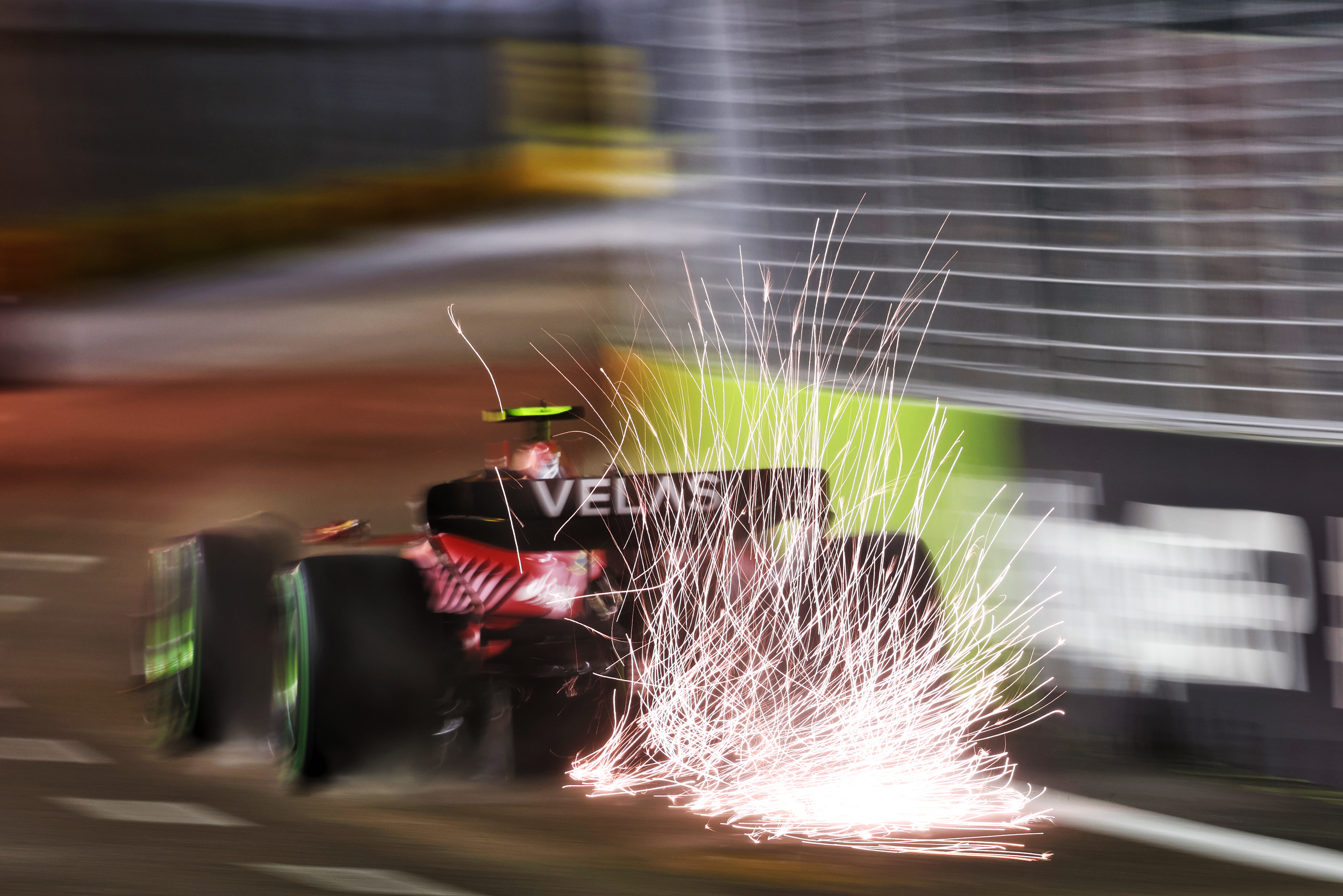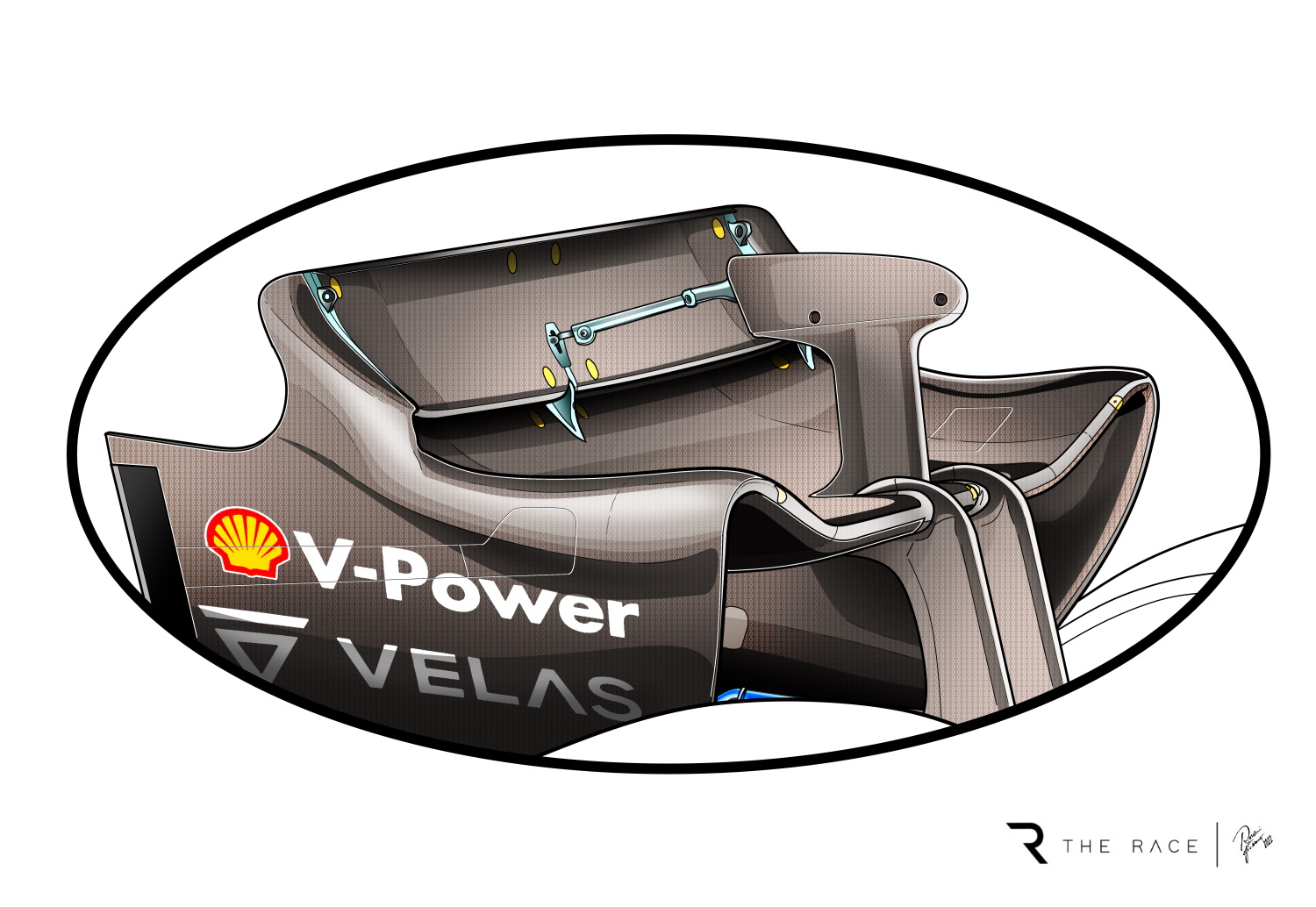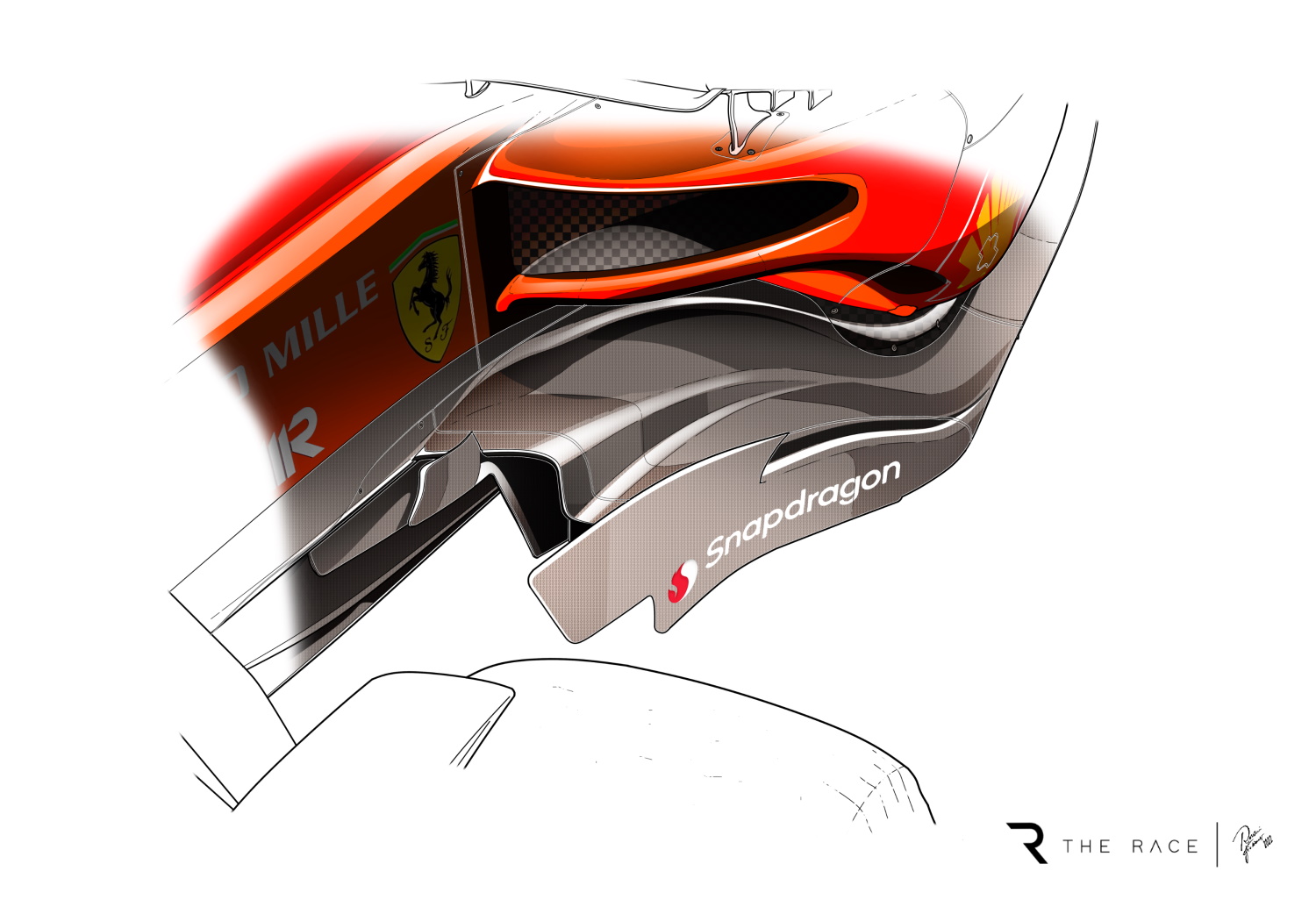The Singapore Grand Prix was yet another race in the 2022 Formula 1 season where a Ferrari pole position failed to materialise into a victory come Sunday.
Despite that, though, the weekend was a positive one overall for the F1-75 and, considering the trend of the 2022 season, the Marina Bay circuit turned out to be friendly enough for Ferrari.
Despite the rain and humid weather, temperatures remained high, and there was no repeat of the problems Ferrari experienced in other wet races. Charles Leclerc had excellent race pace and may well have won had he not hit a wet patch during the launch process that slowed his traction and cost him his pole advantage.
But this should not be misinterpreted as Ferrari being better in Singapore than Red Bull. In terms of tyre management, the RB18 is clearly better than its main challenger – not just as far as the speed at which it puts the tyres into the right operating window is concerned, but also for how far it can make them last.
Sergio Perez also confirmed he’s a driver who exalts himself on street circuits, and barely misstepped. He kept Leclerc at bay when the Ferrari driver seemed to be slightly faster, only to increase the gap on the run to the flag and win with almost eight seconds in hand (until his five-second penalty was applied).
From the onboard view, Leclerc almost seemed to be overdriving in his pursuit; constantly oversteering in the middle of the corner and on the way out. In reality, this aspect is a characteristic of his driving style, as Leclerc prefers a less precise rear end, but is also symptomatic of an F1-75 that continues to have some problems that generate slides. This and the stress on his tyres contributed to his decline in the final stages of the race while Perez continued to stretch away.
Even so, Ferrari was closer in Singapore than it has been in recent races. So what are the potential factors that contributed to that?
On the eve of the Singapore GP, the FIA relaxed the parameters regulating the metrics of technical directive TD39/22 – the one concerning F1 cars’ bouncing. The F1-75 is among the cars to have suffered most from the introduction of this directive.

The decision to loosen the measures in Singapore – and it’s expected to be for Singapore only – was taken because the Marina Bay street circuit does not provide as many issues as Baku as far as porpoising is concerned, and because the asphalt had a conspicuous number of bumps that excessively increased the register oscillations.
The introduction of TD39 at the Belgian GP meant all cars were equipped with an accelerometer, placed in the chassis, to record vertical oscillations. The excessive bumps of Singapore would record altered values, not dependent on porpoising or only on the roughness of the circuit. The FIA delegates therefore decided not to monitor values beyond 7g of vertical force. However, this does not include the part of the TD39 that concerns the plank bending, which is the part that should have caused the most problems for Ferrari.
It is very difficult to be able to quantify if and how much the relaxing of TD39 helped Ferrari in Singapore, especially because Ferrari has always stood out on high-downforce circuits in 2022 anyway. Its higher-downforce wing spec is illustrated below.

Leclerc raced with a different set-up to Carlos Sainz in Singapore, which explains the big gap between them come Sunday. It should also be considered that Max Verstappen wasn’t part of the fight as a result of Red Bull’s fuel miscalculation in qualifying.
Verstappen has generally been faster than Perez in 2022 and, although we don’t know what pace he would have had if he’d started from the front, he would likely have started from pole had he been able to complete his lap.
At a track such as Marina Bay, TD39 wouldn’t have had a great impact even had the standard values been in place. These should be back for this weekend’s race at Suzuka, though the Japanese GP venue is unlikely to produce bouncing problems, particularly as much of the track has been resurfaced.
F1 is returning to Japan after a three-year absence. Suzuka, with its iconic figure of eight layout, is one of the most technical and complete challenges on the calendar. Its characteristics highlight the quality of chassis and downforce a car has, and are a good indicator of a car’s outright performance level. Ferrari was very strong in the slow-speed sections of the Singapore GP track, and the absence of fast corners helped.
Suzuka could therefore be much more difficult for the F1-75 if Ferrari doesn’t find the optimal trim window right away. Despite being a track with similar aerodynamic characteristics to Singapore the gaps are likely to be wider, especially where Mercedes is concerned.
But the Japanese GP is where Ferrari is expected to introduce its new floor, which has been tested by Sainz at Fiorano during one of the 15km ‘demonstration events’ permitted in the rules, in this case a run for a new sponsor after the Italian GP last month. The floor was kept aside at Marina Bay because it was not worth the risk of damage on a track where data collection is not ideal.

The new floor is an evolution of the specification introduced at the French GP, illustrated above, and the major changes may be in the lower part – inside the venturi tunnels – and therefore not visibly exposed.
The purpose of such updates are to increase the percentage points of downforce and the operating window. As a result of TD39 and the changes required in reaction to it, Ferrari seems to have more difficulties achieving aerodynamic balance, due to a stiffening of the suspension set-up. Before the Belgian GP it was possible to have a larger operating window with softer suspension, but this made the plank touch excessively in the jolts.
Because checks on the skid block and the permaglass (plank) have been tightened, Ferrari has had to remedy this by stiffening the car. Lifting the floor off the ground, as Red Bull does, doesn’t allow the F1-75 to generate downforce.
At Suzuka, it will be important for Ferrari that the floor update gives the simulated results it has seen at Maranello.


